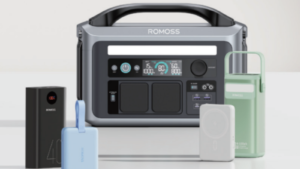CES 2025: Scanner identifies atoms at the speed of light

ABLASCANTM overcomes the limitations of current methods, where sample preparation and analysis are often time-consuming and fail to represent lots comprising several tons of material. Image (C) ABLATOM, with permission.
A new scanner from ABLATOM (a Institut Lumière Matière startup) uses LIBS technology, the technique employed by NASA to identify Martian rocks, by launching its new generation of microscopes.
The scanner is termed ABLASCAN and it is the first intelligent LIBS microscope capable of revealing the atomic composition of materials in milliseconds. The scanner is enhanced by AI. LIBS (Laser-Induced Breakdown Spectroscopy) is a rapid chemical analysis technology that uses a short laser pulse to create a micro-plasma on the sample surface.
LIBS is an entirely optical analysis technique that reveals the chemical composition of any material (solid, liquid, or gas) in just a few milliseconds. Its principle involves focusing a brief laser pulse to sample a fraction of material, forming a plasma. The optical emissions from this plasma are analysed to detect, identify, map, and quantify the material’s chemical elements.
The scanner is 2.5 to 10 times faster than conventional equipment (1 million chemical measurements in just 15 minutes compared to 3–15 hours using traditional techniques). The AI options include an open tool that expands scientific exploration and accelerates the discovery and development of new material properties.
Technical Specifications
• Analysis speed: > 1000 Hz
• Lateral spatial resolution: > 8 μm
• Detection range: 0.1 ppm to 100% in a few milliseconds
• Multi-scale: 10 μm² to > 200 cm²
• Dimensions (L x W x H): 160 x 60 x 190 cm
• Weight: 200 kg
Other technological advantages include the canner being customizable, with plug-and-play, features and automation. This eliminates the need for specialized expertise, making material analysis both accessible and more reliable.
The scanner opens new avenues for exploration, scanning large surfaces (for instance, 200 cm²) in a single sequence while maintaining micrometric resolution under ambient temperature and pressure conditions. ABLASCAN is suitable for a wide range of materials – metals, plastics, ceramics, glass, and rocks – throughout their lifecycle, from extraction to recycling.
In terms of practical application, the scanner will be used to address key societal challenges, from tracking strategic resources in ores and mapping lithium distribution in batteries. ABLASCAN also contributes to the exploration of strategic resources such as lithium and copper, while playing a key role in understanding environmental phenomena like paleoclimate.
In another application, the scanner can be used for detecting metal fragility in nuclear materials to ensuring the quality of strategic metals in recycled waste streams. For example, the scanner can detect and highlightsmetal fragility – a critical issue, for example, in ensuring the safety of installations over several decades.
ABLASCAN also enables the development of new materials, accelerating research into next-generation applications. This ability to quickly explore previously unknown chemical properties drives innovation supports key sectors such as renewable energy and the circular economy.
CES 2025: Scanner identifies atoms at the speed of light
#CES #Scanner #identifies #atoms #speed #light





